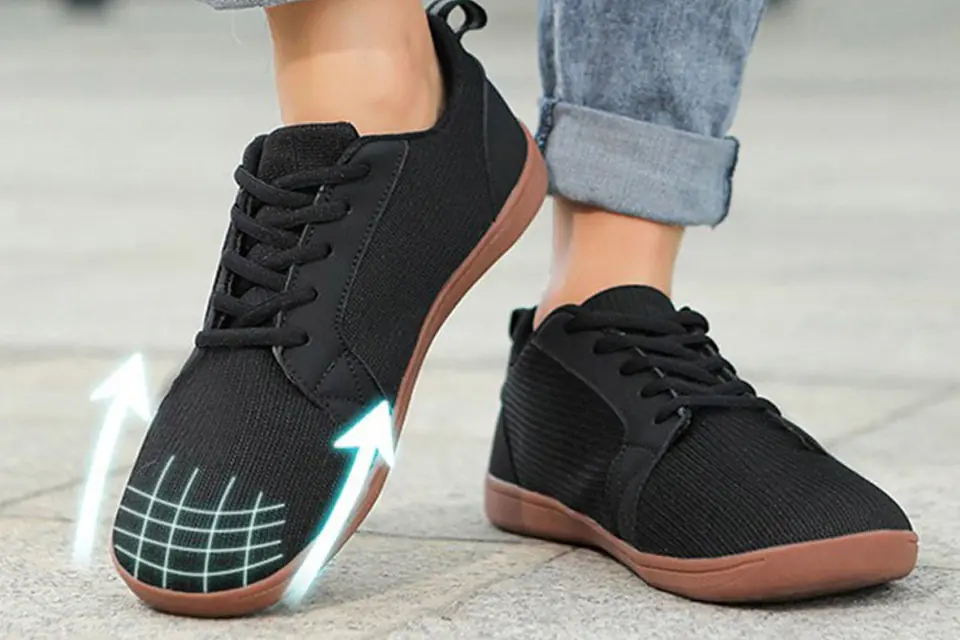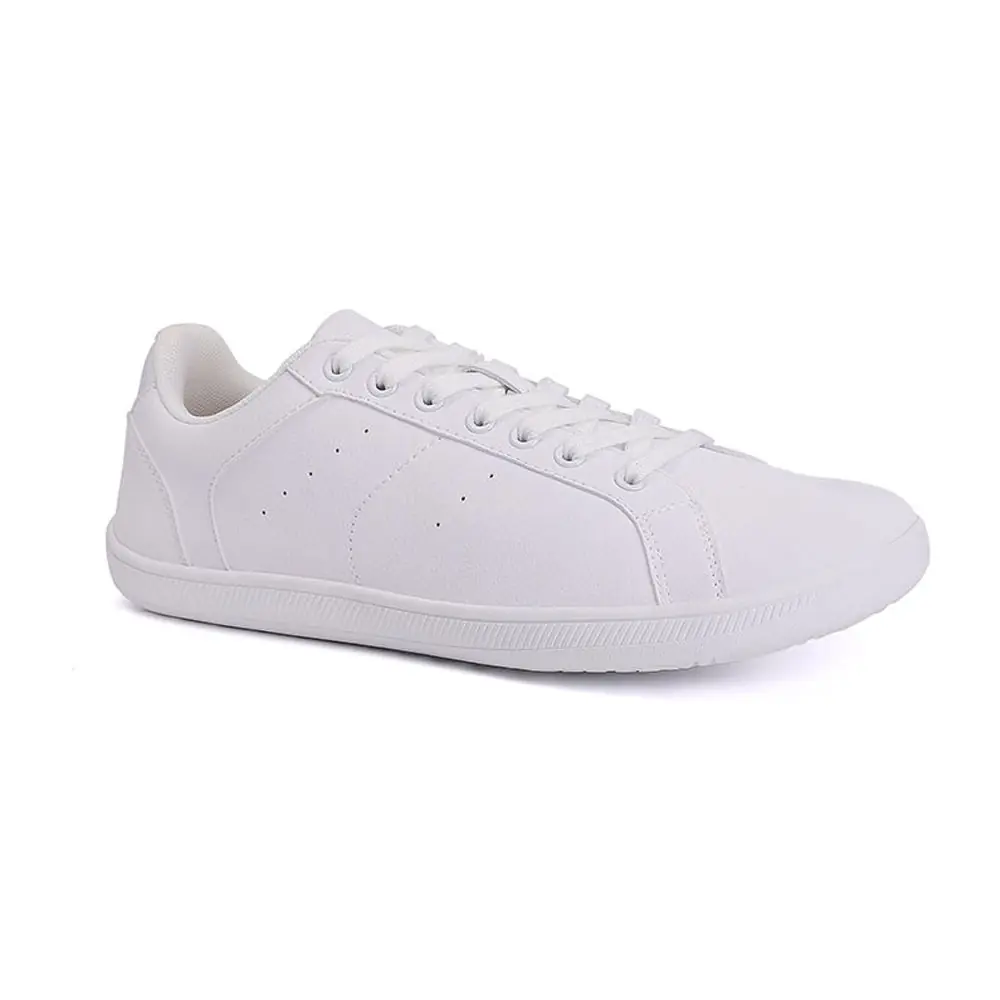
Do You Run Faster Barefoot or with Shoes
Barefoot Running: Embrace the Freedom of Running Without Shoes
Barefoot running has taken the athletic world by storm, offering a natural and minimalist approach to one of humanity’s oldest activities—running. This article delves into the world of barefoot running, comparing it to traditional running with shoes, exploring its benefits, techniques, and how you can make the transition safely. Whether you’re a seasoned runner or just starting, understanding barefoot running can transform your running experience.

Table of Contents
What is Barefoot Running?
Barefoot running, as the name suggests, involves running without the traditional running shoe. Instead of the cushioned soles and arch supports found in standard running shoes, barefoot runners use minimal or no footwear, allowing their feet to move naturally. This method harkens back to our ancestors, who ran without shoes thousands of years ago.
The Evolution of Running Footwear
Historically, humans have always run barefoot or with simple footwear like sandals. The modern running shoe, designed with various technologies for cushioning and support, is a relatively recent invention. Barefoot running challenges the necessity of these advancements by promoting a more natural running form.
Embracing Natural Movement
Running barefoot encourages a midfoot or forefoot strike rather than the traditional heel strike associated with running shoes. This shift can lead to a more efficient running style, reducing the impact on joints and potentially decreasing the risk of certain injuries.
Benefits of Barefoot Running
Barefoot running offers numerous benefits that go beyond just feeling more connected to the ground. Here are some of the key advantages:
Enhanced Foot Strength
Running without shoes engages the muscles, tendons, and ligaments in your feet more intensely. This increased activity can lead to stronger feet, improved balance, and better overall foot health.
Improved Running Form
Without the influence of cushioned soles, runners often adopt a forefoot or midfoot strike, which can enhance running economy. This natural gait allows for smoother transitions and more efficient energy use.
Increased Sensory Feedback
Barefoot running provides direct sensory feedback from the ground, helping runners adjust their stride and improve their biomechanics in real-time. This heightened awareness can lead to more mindful and precise movements.
Reduced Injury Risk
While there is a learning curve, many barefoot runners report fewer injuries related to overuse. By promoting a more natural stride and reducing the impact on joints, barefoot running can minimize the risk of conditions like shin splints and plantar fasciitis.
Barefoot Running vs. Running with Shoes: What’s the Difference?
Understanding the differences between barefoot running and traditional running with shoes is crucial for making an informed decision about which method suits you best.
Stride and Impact
Barefoot Running: Encourages a shorter stride and a forefoot or midfoot strike, which reduces the impact on your ankles, knees, and hips.
Running with Shoes: Often leads to a longer stride and a heel strike, which can increase the impact on your joints and potentially lead to injuries.
Foot Mechanics
Barefoot Running: Promotes natural foot mechanics, allowing your feet to splay and flex as they would when walking or running without shoes.
Running with Shoes: Can restrict natural foot movement due to the rigidity and structure of the shoe, potentially weakening foot muscles over time.
Running Economy
Barefoot Running: May improve running economy by reducing the overall weight of the shoe and encouraging a more efficient stride.
Running with Shoes: Adds extra weight and can sometimes lead to inefficient running mechanics due to over-reliance on cushioning and support features.
Running Technique: How to Run Barefoot Properly
Proper technique is essential for maximizing the benefits of barefoot running while minimizing the risk of injury. Here are some key aspects to focus on:
Midfoot Strike
A midfoot strike involves landing on the middle of your foot rather than the heel. This technique distributes impact more evenly and engages the muscles in your feet and lower legs.
Shorter Stride
Taking shorter, quicker steps can help maintain a higher cadence, which reduces the impact force with each stride and promotes better running efficiency.
Lean Forward Slightly
A slight forward lean from the ankles can help engage your core muscles and improve your overall running posture, enhancing balance and stability.
Relaxed Upper Body
Keeping your upper body relaxed and avoiding unnecessary tension can contribute to a more fluid and natural running motion.
Injury Prevention in Barefoot Running
Transitioning to barefoot running requires careful attention to avoid common injuries. Here are some strategies to ensure a safe switch:
Gradual Transition
Start by incorporating short barefoot runs into your routine, gradually increasing the distance and frequency. This allows your feet and lower legs to adapt to the new demands.
Strengthening Exercises
Engage in foot and lower leg strengthening exercises to build the necessary musculature for barefoot running. Strong muscles can better support your joints and improve overall running mechanics.
Surface Selection
Begin on soft, forgiving surfaces like grass or a track to reduce the impact on your feet and joints. Avoid hard, uneven terrains until your body becomes accustomed to barefoot running.
Listen to Your Body
Pay attention to any discomfort or pain, and adjust your running intensity accordingly. Overtraining can lead to injuries, so it’s essential to listen to your body and provide adequate rest.
Transitioning to Barefoot Running: Steps to Take
Making the switch from traditional running shoes to barefoot running should be done thoughtfully to ensure a smooth and injury-free transition.
Start Slowly
Begin by spending a few minutes running barefoot after your regular runs, gradually increasing the duration as your feet adapt.
Incorporate Strength Training
Include exercises that strengthen your feet, ankles, and lower legs to prepare your muscles for the demands of barefoot running.
Use Minimalist Shoes
If fully barefoot running feels too challenging initially, consider minimalist shoes that offer minimal cushioning and support, allowing for a gradual transition.
Monitor Your Progress
Keep track of how your body responds to barefoot running, noting any improvements or signs of discomfort. Adjust your training accordingly to maintain a healthy balance.
Musculature and Barefoot Running: Strengthening Your Body
Barefoot running engages muscles that are often neglected when running with traditional shoes. Strengthening these muscles can lead to improved performance and reduced injury risk.
Foot Muscles
Running barefoot activates the intrinsic muscles of the feet, enhancing their strength and flexibility. This can lead to better arch support and overall foot stability.
Lower Leg Muscles
The muscles in your calves and shins work harder during barefoot running, promoting greater endurance and resilience in these areas.
Core Stability
A stronger core contributes to better running form and balance, allowing for more efficient transfer of energy during each stride.
Running Economy: Barefoot vs. Shod Running
Running economy refers to the energy demand for a given running velocity. Barefoot running can influence this in several ways:
Reduced Weight
Barefoot runners carry less weight without shoes, which can translate to improved running efficiency and potentially faster times.
Efficient Stride
The natural biomechanics encouraged by barefoot running can lead to a more efficient stride, reducing energy expenditure and enhancing endurance.
Enhanced Proprioception
Better sensory feedback from running barefoot helps in making real-time adjustments to stride and posture, optimizing running economy.
Choosing the Right Footwear: Minimalist Shoes vs. Going Totally Barefoot
While some runners thrive on being completely barefoot, others prefer the slight protection offered by minimalist shoes. Understanding the differences can help you make an informed choice.
Minimalist Shoes
Minimalist shoes provide a thin sole that offers minimal cushioning and protection while still allowing for natural foot movement. They are ideal for those transitioning to barefoot running or who prefer some level of protection from rough terrains.
Going Totally Barefoot
Running entirely barefoot offers maximum sensory feedback and promotes the most natural running mechanics. However, it requires a higher level of foot strength and adaptability, making it suitable for more experienced runners.
Hybrid Approach
Some runners opt for a hybrid approach, alternating between barefoot and minimalist shoes depending on the terrain and their training needs. This flexibility can help in balancing protection with natural movement.
Community and Support: Joining the Barefoot Running Movement
Becoming part of the barefoot running community can provide support, resources, and motivation as you embark on your barefoot running journey.
Online Forums and Groups
Engage with online communities where barefoot runners share tips, experiences, and advice. These platforms can be invaluable for learning and staying motivated.
Local Running Clubs
Join local running clubs that embrace barefoot running. Participating in group runs can offer practical experience and camaraderie.
Workshops and Clinics
Attend workshops and clinics focused on barefoot running techniques and injury prevention. These educational opportunities can enhance your skills and knowledge.
Conclusion
Barefoot running offers a refreshing and natural approach to running, emphasizing foot strength, efficient running form, and a deeper connection with the ground. While it comes with its own set of challenges, the benefits can be profound for those willing to make the transition mindfully.
- Enhanced Foot Strength: Strengthens muscles, tendons, and ligaments in the feet.
- Improved Running Form: Promotes a more efficient stride and better biomechanics.
- Injury Prevention: Reduces the risk of certain overuse injuries with proper technique.
- Running Economy: Increases energy efficiency and potentially improves performance.
- Community Support: Access to a supportive network of barefoot runners.
Embracing barefoot running or incorporating minimalist shoes into your routine can transform your running experience, offering both physical and mental benefits. Listen to your body, take gradual steps, and enjoy the journey towards a more natural and fulfilling way of running.
For more information on Men’s Barefoot Shoes, explore our range of Waterproof Minimalist Men’s Barefoot Boots, or check out our Women’s Zero Drop Non Slip Barefoot Exercise Shoes.
